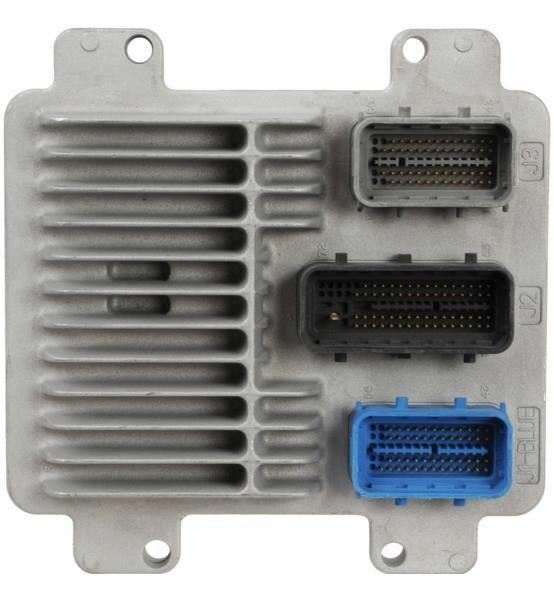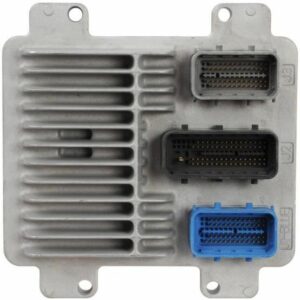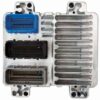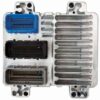Restore Peak Performance to Your Vehicle’s Engine
Are you battling frustrating issues like a persistent Check Engine Light, intermittent stalling, or a no-start condition in your vehicle? The Powertrain Control Module (PCM), often called the engine’s brain, is frequently the source of these complex electrical problems. This replacement PCM, part number 12600928, is the definitive solution for a wide range of GM vehicles. Over my 20 years in automotive diagnostics, I’ve seen firsthand how a failing PCM can mimic dozens of other issues, leading to wasted time and money on unnecessary parts. This module restores the precise fuel delivery, ignition timing, and transmission shifting your vehicle had from the factory.
What sets this part apart is our professional programming service. Before we ship your order, we flash the module with the latest GM-certified software updates, tailored specifically to your vehicle using the VIN you provide. This means you receive a part that is truly ready for installation, bypassing the expensive programming fees and scheduling hassles at a dealership. For a professional technician, this means faster bay turnover. For the DIY enthusiast, it means you can confidently complete the job in your own garage. Getting a reliable 2006 Malibu PCM shouldn’t be a complicated process, and we’re here to make it simple and effective.
From the Diagnostic Bay: The Case of the Phantom Stall
I remember a 2006 Pontiac G6 that came into the shop with an issue that had stumped two other mechanics. The car would run perfectly for 20 minutes and then stall without warning, only to restart after cooling down. There were no consistent trouble codes, just a generic U0100 ‘Lost Communication’ code that would pop up occasionally. We checked fuel pressure, ignition components, and wiring harnesses—all were fine. Drawing on experience, I suspected a heat-related failure inside the PCM. The internal solder joints can develop micro-fractures over years of heat cycles. We installed one of our pre-programmed PCMs, and the problem vanished instantly. The customer was thrilled to have their reliable car back after weeks of uncertainty.
Is Your Vehicle Showing These PCM Failure Signs?
- ✔ Persistent Check Engine Light (CEL) that won’t clear.
- ✔ Diagnostic Trouble Codes (DTCs) related to internal module failure, such as P0601, P0602, P0606.
- ✔ Unexplained drop in fuel economy.
- ✔ Engine cranks but refuses to start.
- ✔ Intermittent stalling or rough idling, especially after the engine warms up.
- ✔ Harsh or erratic automatic transmission shifting.
- ✔ Communication errors with scan tools.
- ✔ Failure to pass state emissions testing.
A Straightforward Guide to PCM Installation
Installing your new 2006 Malibu PCM is a manageable job for a confident DIYer. The most critical part is performing the security relearn procedure afterward, which ensures your vehicle recognizes the new module. No special tools are required for the relearn.
- Safety First: Disconnect the negative terminal from your vehicle’s battery and secure it away from the post.
- Locate the PCM: On most compatible models, the PCM is found in the left-hand (driver’s side) front of the engine compartment, near the air filter housing.
- Disconnect Connectors: Carefully unlatch and remove the electrical wiring harness connectors from the old module. Inspect them for any corrosion or damage.
- Remove the Old Module: Unbolt the old PCM from its mounting bracket and remove it from the vehicle.
- Install the New PCM: Mount your new, pre-programmed PCM onto the bracket and secure the bolts.
- Reconnect Everything: Firmly plug the wiring harnesses into the new module until they click into place. Reconnect the negative battery terminal.
- Perform Security Relearn: This step is essential. Turn the key to the ‘ON’ position (without starting the engine) for 10-15 minutes. Turn it ‘OFF’ for 10 seconds. Repeat this cycle two more times (three cycles total). On the fourth attempt, the vehicle should start and run normally.
Verified Fitment For These GM Models
This module is a direct-fit replacement for the following vehicles equipped with the specified engine. Please ensure your vehicle’s original module has part number 12600928 or 19210070 printed on the label to guarantee compatibility.
- Chevrolet Equinox: 2006 (LH engine compartment)
- Chevrolet Malibu: 2006 (3.5L Engine)
- Chevrolet Uplander: 2006 (3.5L Engine)
- Pontiac G6: 2006 (ID 12600928)
- Pontiac Torrent: 2006 (LH engine compartment)
- Buick Rendezvous: 2006 (3.5L Engine), 2007 (3.5L Engine)
- Buick Terraza: 2006 (3.5L Engine)
- Pontiac Montana: 2006 (SV6, 3.5L Engine)
Frequently Asked Questions About The 2006 Malibu PCM
Why do you need my Vehicle Identification Number (VIN)?
Your VIN is essential for us to program the Powertrain Control Module with the correct, vehicle-specific software and calibrations from GM. This ensures perfect compatibility with your engine, transmission, and factory options, making the installation process smooth and effective.
Is this part difficult to install myself?
The physical replacement is straightforward, requiring basic hand tools to unbolt the old unit and install the new one. The most important step is the security relearn procedure, which involves a series of key cycles but does not require any special scan tools. Our instructions walk you through the entire process.
What is the security relearn procedure?
It’s a process that syncs the new PCM with your vehicle’s anti-theft system. After installation, you’ll simply turn the ignition on for about 10 minutes, off for 10 seconds, and repeat this three times. This allows the vehicle to recognize and accept the new module, so the engine can start.
Will this fix my car’s specific problem?
This module is the direct solution for faults originating within the PCM itself, such as internal circuit errors (P0601), processing failures, and other symptoms listed above. While it can’t fix a faulty sensor or wiring issue elsewhere, it resolves the core electronic control problems that are very common in these vehicles.
Is this a brand new part?
This is a high-quality, fully tested, and verified functional replacement part. Each module undergoes rigorous inspection and programming with the latest software to ensure it meets or exceeds original factory performance and reliability standards.



